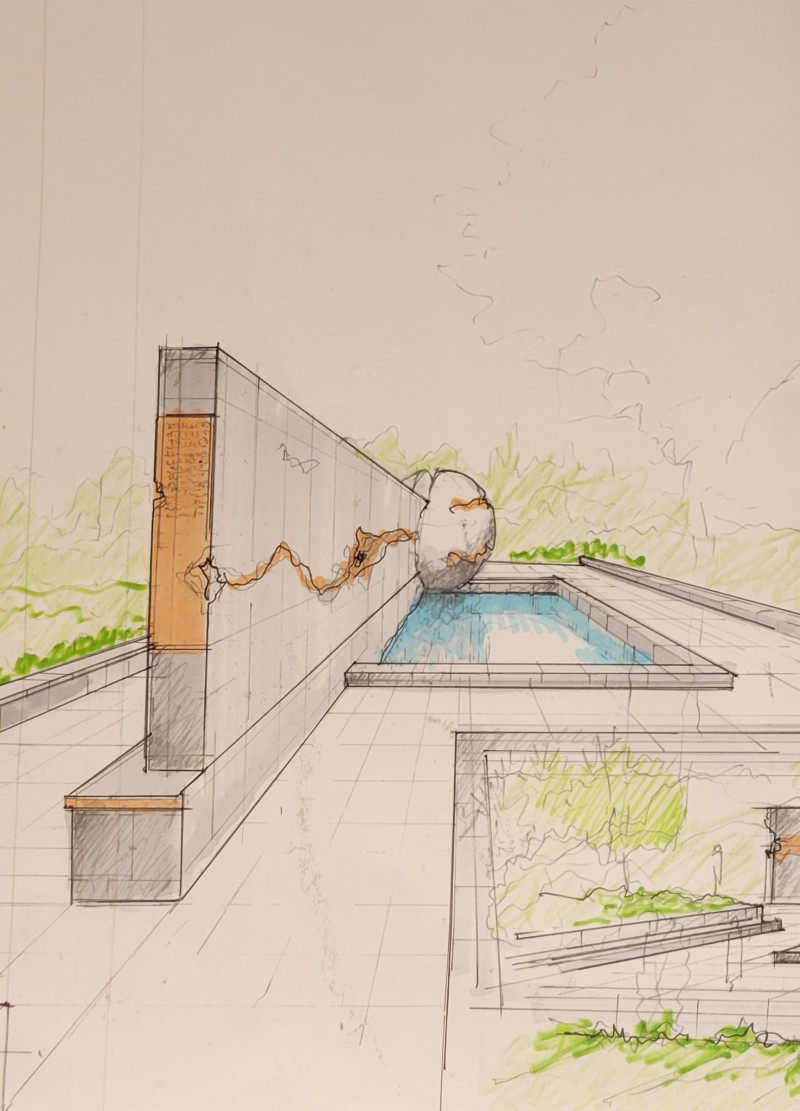5 key facts about this project
Spatially, the memorial is organized around a central circular plaza that facilitates a communal gathering point, enhancing the visitor experience. At the core of the plaza lies a large, spherical monument designed to symbolize the earth, representing the far-reaching impact of genocide. The monument includes a cracked surface, echoing the fractures in society due to collective trauma. Surrounding this sphere is a reflective water feature that creates a tranquil atmosphere, allowing visitors to engage with their surroundings while contemplating the memorial's profound themes.
The timeline wall, a key component of the design, runs parallel to the plaza. This wall is inscribed with significant dates and events related to genocide, encouraging visitors to connect with history on a personal level. The panels are made from durable materials such as stone and granite, conveying permanence and solemnity. Incorporating glass elements not only provides transparency but also invites natural light, enhancing the overall ambiance of the memorial.
The green spaces interspersed throughout the site are intentionally designed to soften the stark architectural forms. These areas of vegetation symbolize hope and resilience, contrasting with the gravity of the memorial’s purpose. The integration of natural elements fosters a sense of peace, complementing the narrative of healing.
Unique to this project is its approach to education and interaction. Unlike traditional memorials that often serve solely as static reminders, The Last Genocide Memorial engages visitors in an active dialogue. The design encourages reflection on the importance of preventing future atrocities, pushing the boundaries of what a memorial can achieve. The careful selection of materials—such as concrete for durability, glass for transparency, and stone for gravity—reflects a commitment to both function and symbolism.
In addition to its contemplative spaces, the memorial’s architectural details are essential in conveying its message. The arrangement of pathways is designed for fluid navigation, inviting visitors to experience the historical timeline in an immersive manner. This thoughtful organization helps communicate the narrative of genocide in a way that is both impactful and educational.
For those interested in gaining a deeper understanding of this architectural project, reviewing elements such as architectural plans, architectural sections, and architectural designs will provide additional insights into how these concepts have been articulated in the memorial’s construction. The architectural ideas behind The Last Genocide Memorial illustrate a comprehensive approach to memorialization and education within a poignant architectural framework.


























